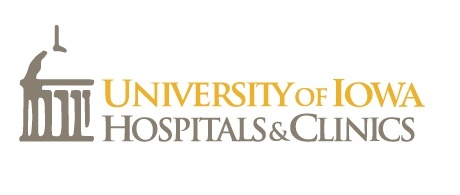A6 in Treating Patients With Persistent or Recurrent Ovarian Epithelial Cancer, Fallopian Tube Cancer, or Primary Peritoneal Cancer
| Status: | Completed |
|---|---|
| Conditions: | Ovarian Cancer, Cancer |
| Therapuetic Areas: | Oncology |
| Healthy: | No |
| Age Range: | 18 - Any |
| Updated: | 1/17/2019 |
| Start Date: | July 2009 |
A Phase II Evaluation of a Urokinase-Derived Peptide (A6) in the Treatment of Persistent or Recurrent Epithelial Ovarian, Fallopian Tube, or Primary Peritoneal Carcinoma
This phase II trial is studying the side effects and how well A6 works in treating patients
with persistent or recurrent ovarian epithelial cancer, fallopian tube cancer, or primary
peritoneal cancer. A6 may stop the growth of tumor cells by blocking blood flow to the tumor.
with persistent or recurrent ovarian epithelial cancer, fallopian tube cancer, or primary
peritoneal cancer. A6 may stop the growth of tumor cells by blocking blood flow to the tumor.
PRIMARY OBJECTIVES:
I. To assess the activity of A6, as measured by the 6-month progression-free survival (PFS)
rate and objective tumor response (complete or partial) rate, in patients with persistent or
recurrent ovarian epithelial, fallopian tube, or primary peritoneal carcinoma.
II. To determine the frequency and severity of adverse events as assessed by CTCAE v3.0.
SECONDARY OBJECTIVES:
I. To characterize the duration of PFS and overall survival. II. To identify biomarkers of
drug effect on peripheral blood mononuclear cells (PBMCs).
TERTIARY OBJECTIVES:
I. To explore whether genes identified as being up- or down-regulated by exposure of human
PBMCs to A6 in vitro are also up- or down-regulated following treatment of patients with A6
in vivo.
II. To explore whether there is an association between the expression of candidate A6
receptors in the tumor prior to treatment with A6 (as determined by IHC) and response and
PFS.
III. To explore whether there is an association between change in expression of candidate
biomarkers in PBMCs between 0-24 hours following the first dose of A6 and response and PFS.
IV. To explore whether there is an association between change in expression of candidate
biomarkers in PBMCs over the course of the first one month cycle (course 1) and response and
PFS.
V. To determine whether there is an association between plasma A6 levels measured on days 2
(24 hours after the first dose and 4 hours after the second dose) and 8 (prior to injection
of A6) of course 1 and levels of expression of candidate biomarkers in PBMCs collected on the
same days.
VI. To explore whether there is an association between plasma A6 levels measured on days 2
(24 hours after the first dose and 4 hours after the second dose) and 8 (prior to injection
of A6) of course 1 and response and PFS.
VII. To explore whether there is an association between candidate serum biomarkers and
response and PFS over the course of A6 treatment.
OUTLINE: This is a multicenter study.
Patients receive A6 subcutaneously once daily on days 1-28. Courses repeat every 28 days in
the absence of disease progression or unacceptable toxicity.
After completion of study treatment, patients are followed every 3 months for 2 years and
then every 6 months for 3 years.
I. To assess the activity of A6, as measured by the 6-month progression-free survival (PFS)
rate and objective tumor response (complete or partial) rate, in patients with persistent or
recurrent ovarian epithelial, fallopian tube, or primary peritoneal carcinoma.
II. To determine the frequency and severity of adverse events as assessed by CTCAE v3.0.
SECONDARY OBJECTIVES:
I. To characterize the duration of PFS and overall survival. II. To identify biomarkers of
drug effect on peripheral blood mononuclear cells (PBMCs).
TERTIARY OBJECTIVES:
I. To explore whether genes identified as being up- or down-regulated by exposure of human
PBMCs to A6 in vitro are also up- or down-regulated following treatment of patients with A6
in vivo.
II. To explore whether there is an association between the expression of candidate A6
receptors in the tumor prior to treatment with A6 (as determined by IHC) and response and
PFS.
III. To explore whether there is an association between change in expression of candidate
biomarkers in PBMCs between 0-24 hours following the first dose of A6 and response and PFS.
IV. To explore whether there is an association between change in expression of candidate
biomarkers in PBMCs over the course of the first one month cycle (course 1) and response and
PFS.
V. To determine whether there is an association between plasma A6 levels measured on days 2
(24 hours after the first dose and 4 hours after the second dose) and 8 (prior to injection
of A6) of course 1 and levels of expression of candidate biomarkers in PBMCs collected on the
same days.
VI. To explore whether there is an association between plasma A6 levels measured on days 2
(24 hours after the first dose and 4 hours after the second dose) and 8 (prior to injection
of A6) of course 1 and response and PFS.
VII. To explore whether there is an association between candidate serum biomarkers and
response and PFS over the course of A6 treatment.
OUTLINE: This is a multicenter study.
Patients receive A6 subcutaneously once daily on days 1-28. Courses repeat every 28 days in
the absence of disease progression or unacceptable toxicity.
After completion of study treatment, patients are followed every 3 months for 2 years and
then every 6 months for 3 years.
Inclusion Criteria:
- Histologically confirmed persistent or recurrent ovarian epithelial, fallopian tube,
or primary peritoneal carcinoma, including any of the following epithelial cell types:
- Serous adenocarcinoma
- Endometrioid adenocarcinoma
- Mucinous adenocarcinoma
- Undifferentiated carcinoma
- Clear cell adenocarcinoma
- Mixed epithelial carcinoma
- Transitional cell carcinoma
- Malignant Brenner tumor
- Adenocarcinoma not otherwise specified
- Measurable disease, defined as ≥ 1 lesion that can be accurately measured in ≥ 1
dimension as ≥ 20 mm by conventional techniques or ≥ 10 mm by spiral CT scan
- Must have ≥ 1 target lesion to assess response as defined by RECIST criteria
- Tumors within a previously irradiated field are designated as "non-target"
lesions unless progression is documented or a biopsy is obtained to confirm
persistence of disease ≥ 90 days following completion of radiotherapy
- Must not be eligible for a higher priority GOG clinical trial, if one exists (i.e.,
any active GOG Phase III clinical trial for the same patient population)
- Must have received 1 prior platinum-based chemotherapeutic regimen containing
carboplatin, cisplatin, or another organoplatinum compound for management of primary
disease
- Initial treatment may have included high-dose therapy, consolidation therapy,
non-cytotoxic therapy, or extended therapy administered after surgical or
non-surgical assessment
- One additional cytotoxic regimen for management of recurrent or persistent
disease allowed
- Patients who have received only one prior cytotoxic regimen (platinum-based
regimen for management of primary disease) must have a platinum-free interval of
< 12 months, have progressed during platinum-based therapy, or have persistent
disease after a platinum-based therapy
- GOG performance status 0-2 (for patients who received 1 prior regimen) OR 0-1 (for
patients who received 2 prior regimens)
- ANC ≥ 1,500/mm^3
- Platelet count ≥ 100,000/mm^3
- Creatinine ≤ 1.5 times upper limit of normal (ULN)
- Bilirubin ≤ 1.5 times ULN
- SGOT ≤ 2.5 times ULN
- Alkaline phosphatase ≤ 2.5 times ULN
- Not pregnant or nursing
- Negative pregnancy test
- Fertile patients must use effective contraception
- Able and willing to self-administer daily subcutaneous (SC) injections or has a
caregiver who is willing and able to administer daily SC injections
- No active infection requiring antibiotics, except uncomplicated urinary tract
infection
- No neuropathy (sensory and motor) > grade 2, according to CTCAE v3.0
- No other invasive malignancies within the past 5 years, except for non-melanoma skin
cancer
- No history of sensitivity to A6
- No active gastrointestinal bleeding within the past month
- No other disease that, in the opinion of the investigator, could jeopardize patient
safety or interfere with study objectives
- No concurrent amifostine or other protective reagents
- Recovered from prior surgery, radiotherapy, or chemotherapy
- No prior non-cytotoxic therapy for management of recurrent or persistent disease
- Prior biologic (non-cytotoxic) therapy as part of primary treatment regimen
allowed
- At least 1 week since prior hormonal therapy directed at the malignant tumor
- At least 3 weeks since any other prior therapy directed at the malignant tumor,
including immunological agents
- More than 2 weeks since prior major surgical procedure
- More than 5 years since prior radiotherapy to any portion of the abdominal cavity or
pelvis other than for the treatment of ovarian, fallopian tube, or primary peritoneal
cancer
- More than 3 years since prior radiotherapy for localized cancer of the breast, head
and neck, or skin AND remains free of recurrent or metastatic disease
- Patients with ductal breast carcinoma in situ may have undergone localized
radiotherapy within the past 3 years
- More than 5 years since prior chemotherapy for any abdominal or pelvic tumor other
than for the treatment of ovarian, fallopian tube, or primary peritoneal cancer
- More than 3 years since prior adjuvant chemotherapy for localized breast cancer AND
remains free of recurrent or metastatic disease
- More than 30 days since prior investigational drugs
- No prior A6
- No prior radiotherapy to > 25% of marrow-bearing areas
- No prior cancer treatment that would contraindicate study therapy
We found this trial at
16
sites
Click here to add this to my saved trials
Vanderbilt-Ingram Cancer Center The Vanderbilt-Ingram Cancer Center, located in Nashville, Tenn., brings together the clinical...
Click here to add this to my saved trials
Abington Memorial Hospital Abington Memorial Hospital (AMH) is a 665-bed, regional referral center and teaching...
Click here to add this to my saved trials
Click here to add this to my saved trials
Case Western Reserve Univ Continually ranked among America's best colleges, Case Western Reserve University has...
Click here to add this to my saved trials
MetroHealth Med Ctr The MetroHealth System is one of the largest, most comprehensive health care...
Click here to add this to my saved trials
18101 Lorain Avenue
Cleveland, Ohio 44111
Cleveland, Ohio 44111
216.476.7000

Cleveland Clinic Cancer Center at Fairview Hospital Fairview Hospital is a 488-bed hospital located at...
Click here to add this to my saved trials
Riverside Methodist Hospital Serving central Ohio since 1892, Riverside Methodist Hospital is consistently ranked one...
Click here to add this to my saved trials
University of Iowa Hospitals and Clinics University of Iowa Hospitals and Clinics—recognized as one of...
Click here to add this to my saved trials
Click here to add this to my saved trials
Click here to add this to my saved trials
940 NE 13th St
Oklahoma City, Oklahoma 73190
Oklahoma City, Oklahoma 73190
(405) 271-6458

University of Oklahoma Health Sciences Center The OU Health Sciences Center is composed of seven...
Click here to add this to my saved trials
Nebraska Methodist Hospital Methodist Hospital is a general medical and surgical hospital in Omaha, NE....
Click here to add this to my saved trials
300 Halket St.
Pittsburgh, Pennsylvania 15213
Pittsburgh, Pennsylvania 15213
1-866-MyMagee (696-2433)

Magee-Womens Hospital of UPMC Magee-Womens Hospital of UPMC is a world-class center for both women's...
Click here to add this to my saved trials
2000 Circle of Hope Dr
Salt Lake City, Utah 84112
Salt Lake City, Utah 84112
(801) 585-0303

Huntsman Cancer Institute at University of Utah Huntsman Cancer Institute (HCI) is part of the...
Click here to add this to my saved trials
Stony Brook University Medical Center Stony Brook Medicine expresses our shared mission of research, clinical...
Click here to add this to my saved trials







